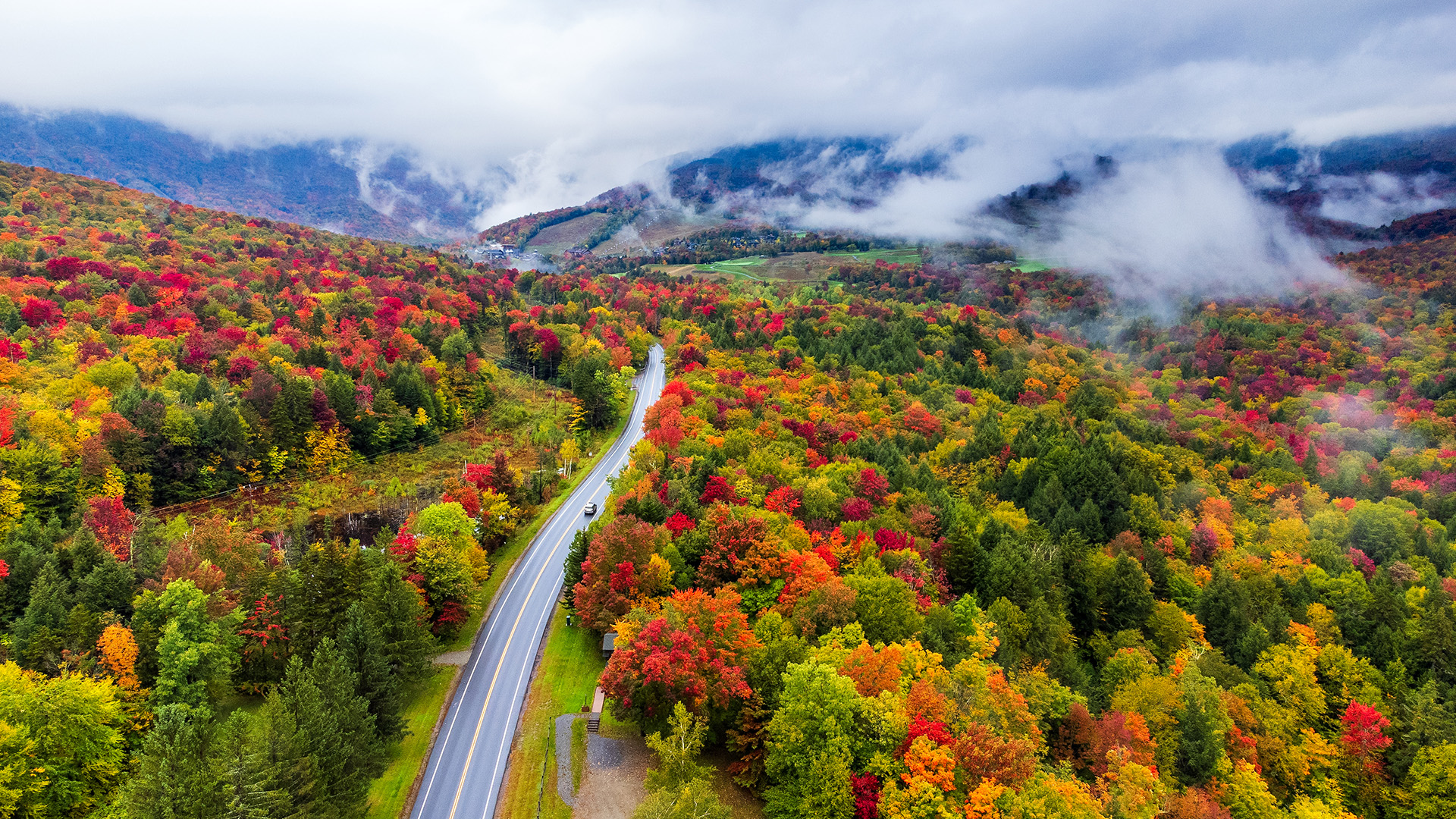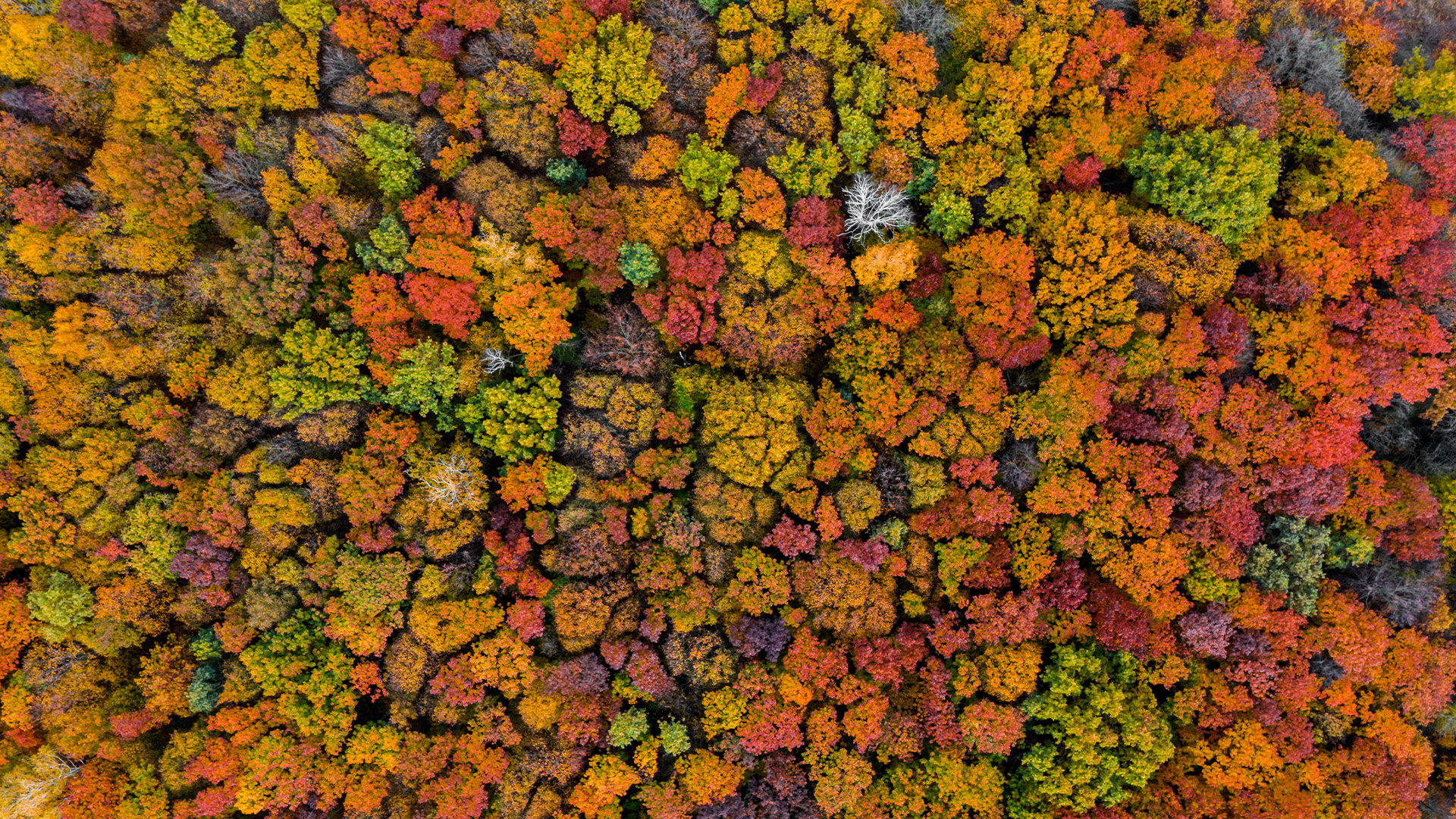
Why do leaves change color in the fall?
Plants draw on a suite of pigments to produce energy from sunlight, and in the fall, some become more obvious than others.

Every autumn, so-called leaf peepers journey to places like Colorado, Vermont and Massachusetts to take in colorful fall foliage. From coast to coast, green forests slide into shades of red, yellow and orange as the seasons change, and you can often time it right to get the best views.
But why do plants undergo this radical change, and how do they know when to start?
Within temperate and boreal forests, trees and shrubs that drop their leaves are called deciduous plants; they include groups such as aspens, cottonwoods, maples and oaks. On the other end of the spectrum are plants that don't shed their leaves — for example, the pines, spruces, cedars and firs that make up the conifers, or evergreens. Both types of trees produce less energy in the winter, but conifers have adaptations, such as a waxy coating to minimize water loss, that help them keep their needles year-round.
According to Adam Moore, a supervisory forester with the Colorado State Forest Service, trees of all kinds pick up on cues from their environment, much like we do, that tell them when it's time to start preparing for winter. In early fall, the weather conditions start to change: It gets cooler — with crisp, but not freezing, nights — and the duration of daylight is reduced. Collectively, there's less sunlight for plants to harvest using the chlorophyll in their leaves, so deciduous trees begin to pull back their investment in keeping them alive.
"Trees are like a factory, and they like to be efficient," Moore told Live Science. "They're producing oxygen for us and energy for themselves, and without sunlight, they start to close up shop for the season, so to speak." By the time the first freezes hit, the trees are well on their way to dormancy.
Related: The 12 biggest 'little' mysteries of fall — solved!
While chlorophyll is the most common pigment that plants use to harvest light — green leaves look that way because chlorophyll absorbs red and blue light and reflects green light — plants often have a variety of secondary pigments, too. As the chlorophyll in a tree's leaves begins to wane, these underlying pigments become visible. This is what we're seeing when fall foliage peaks, Kristina Bezanson, an arboriculturist at the University of Massachusetts Amherst, told Live Science in an email.
Sign up for the Live Science daily newsletter now
Get the world’s most fascinating discoveries delivered straight to your inbox.
Red and purple hues stem from secondary pigments called anthocyanins, while carotenoids and xanthophylls yield oranges and yellows, respectively. Within a single group, such as the maples, different species have evolved their own suite of pigments. Red maples, for example, turn a brilliant scarlet in the fall, while black maples become yellow.
And while these pigments make the trees beautiful, they also serve an important purpose.
"Remember that trees are autotrophs; they make their own food through photosynthesis, and the leaves are often called the 'food factories' for the tree," Bezanson said. Having a range of pigments that can target different wavelengths of light allows plants to harvest more energy during photosynthesis. It can be expensive to invest in so many pigments, so not all trees pursue this strategy. But those that do are often relatively fast growers.
While much of the fall flush is driven by the environment, the timing of the color change is at least partially dictated by genetics — in one experiment, researchers found that tens of thousands of genes were expressed differently during the color-changing period. Some species, like sourwood (Oxydendrum arboreum), start to change color as early as late summer, while oaks often drop their leaves long after other trees are bare. Scientists have also noted that members of the same species living at a similar latitude will change colors at the same time regardless of elevation, when trees living at higher, colder elevations would typically be expected to change first because of the cooler temperatures.

But as winter settles in, deciduous plants eventually shed their leaves, leaving behind small, round "leaf scars" at the node where the leaf attaches to the tree. Even in their denuded, naked state, trees still provide valuable ecosystem services. They block wind and continue to provide valuable habitat for birds, and fallen leaves provide nutrients as they break down into the soil. "Shedding leaves annually helps build the soil by making mulch, blanketing the soil over the roots during winter" to keep them warm, Bezanson said.

Amanda Heidt is a Utah-based freelance journalist and editor with an omnivorous appetite for anything science, from ecology and biotech to health and history. Her work has appeared in Nature, Science and National Geographic, among other publications, and she was previously an associate editor at The Scientist. Amanda currently serves on the board for the National Association of Science Writers and graduated from Moss Landing Marine Laboratories with a master's degree in marine science and from the University of California, Santa Cruz, with a master's degree in science communication.










